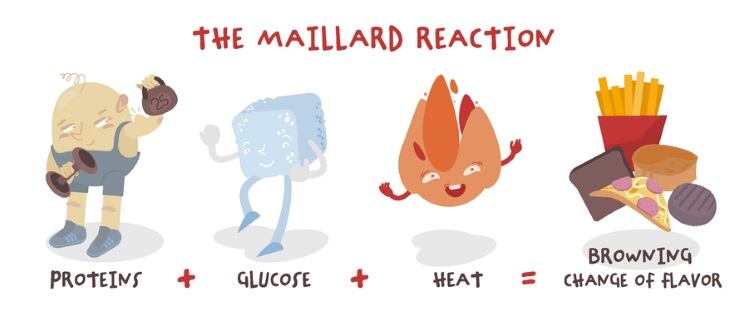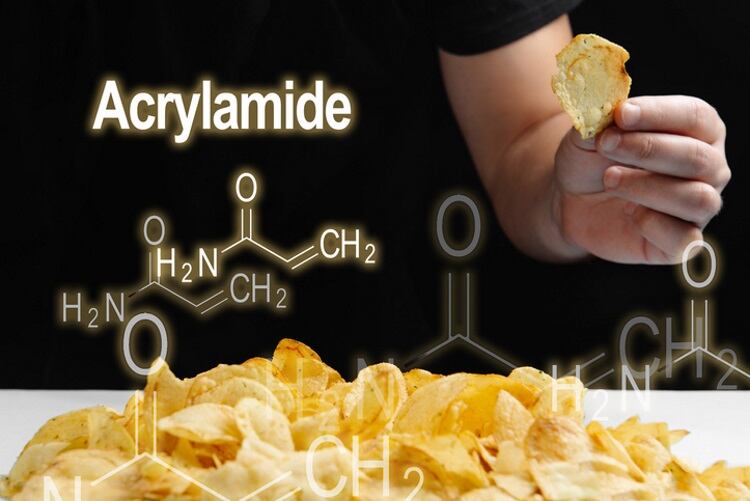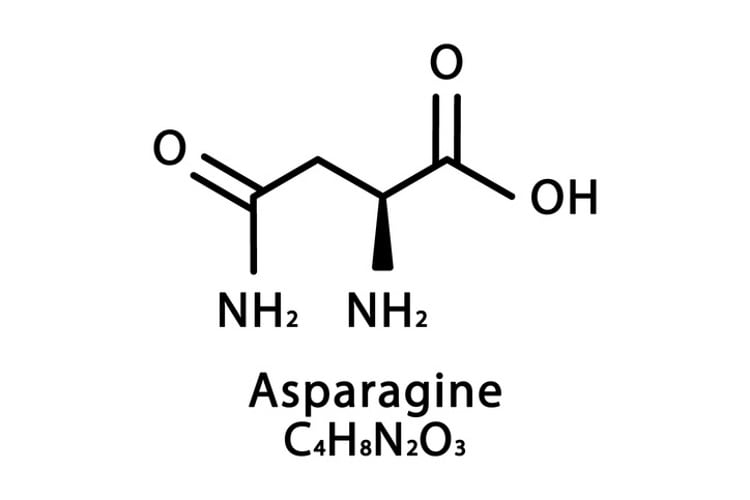With changes to acrylamide regulation taking shape in 2023 - as reported in BakeryandSnacks - manufacturers now edge closer to renewed legislation. As a result, we can expect to see new or reformulated product developments that reflect the legislative updates.
Acrylamide is found in various foods, including baked goods and snacks. The chemical substance comes from the naturally present substances of free asparagine (amino acids) and sugars. Acrylamide forms from cooking processes, such as baking, that require high temperatures over 120°C.

Across Europe and throughout the globe, the savoury snacks sector continues to dedicate significant efforts and resources to develop mitigation tools and techniques to reduce and minimise the presence of acrylamide in its products. Individual companies and trade associations collaborate to share non-competitive food safety information.
Such as the European Snacks Association (ESA), which is committed to continuing this work based on the ALARA principle.
ALARA – which stands for ‘as low as reasonably achievable’ – relates to avoiding radiation exposure, regardless of whether the dose is small, if it does not have a direct benefit.
The European ALARA Network works to promote the broader and more uniform implementation of the principle. It also aims to provide focus and a system to understand information based on ALARA experiences, and identify and investigate issues of interest to improve its uptake further.
Facing unique obstacles
“Acrylamide presents many unique challenges for snacks manufacturers, not least because of the well-documented natural variations in precursors in agricultural raw materials,” said Andrew Curtis, ESA’s scientific and regulations affairs manager.
Giving the example of potatoes (Solanum tuberosum), Curtis explained the variations in levels of precursors occur from variety to variety and plant to plant. As a result, they depend on storage conditions, vary within specific lots of raw materials and are impacted by factors including geography, soil type, season, climate and extreme weather conditions such as drought or flooding.
“These variations are not easily predictable and even the best monitoring systems cannot identify or effectively exclude all problematic raw materials,” he added.
Although uniformity can be applied to factory-based processing controls, such as by controlling oil temperatures and moisture content, optimisation still needs to eradicate manufacturing challenges.
According to ESA, issues with raw material availability and variability mean that no manufacturer can eliminate variation to the extent they can ensure all their products will meet a single threshold value all year round unless thresholds are set at a very high level.
“Acrylamide also presents specific problems in that it can only be tested for in finished products and even then, testing cannot identify or effectively exclude all problematic pieces within a batch due to that lack of homogeneity in the raw materials,” said Curtis.
Today, an accurate, rapid test method is absent, and ESA noted several EU countries are without sufficient laboratory capacity to test for the contaminant.
Regulating acrylamide: Five years on
The European Commission Regulation 2017/2158 – established on 20 November 2017 – sets out an approach to mitigation measures and benchmark rates to reduce acrylamide presence in food. Its key objective is to ensure that food businesses, including bakery and snack brands, implement steps to lessen the formation of, and therefore the presence of, acrylamide.
The snacking sector’s published peer-reviewed paper Progress on reducing acrylamide levels in potato crisps in Europe: 2002 to 2019 was designed to give the most recent overview of the European industry. Data collected by industry and Member States shows that despite the challenges, the work the sector has undertaken to identify and implement best practices has led to a significant reduction in mean acrylamide levels in standard potato crisps, as well as steep falls in the 85th, 90th and 95th quantiles (Q85, Q90, and Q95).
“The data, therefore, confirms that the regulatory approach set out by the Commission and the Member States in Regulation (EU) 2017/2158 is the most effective, balanced and appropriate regulatory measure for reducing levels in our sector’s finished products and continues to effectively contribute to consumer safety,” said Curtis, one of the study’s authors.
Acrylamide content in various product categories is being monitored very carefully by government health bodies and regulatory agencies worldwide in the US, Canada, Europe and Asia.
Foods and brands targeting the children’s market is where the regulatory concern is mainly directed these days, as acrylamide’s neurotoxicity is a key concern for developing neural systems.

“Consumer groups and food safety regulators are definitely concerned as surveys continue to show sustained high levels in various products on the shelves,” said Daniel Mendoza, business development of Enzymes at Kerry.
“One key factor affecting the current regulatory landscape is public concern with the constant flow of new studies showing the neurotoxic, carcinogenic or genotoxic effects from acrylamide being present in their foods.
He added, “Government regulators are feeling pressure to reduce public exposure to acrylamide and they have created an acrylamide reduction toolbox to help manufacturers reduce their acrylamide content. However, there have been reports that levels are not dropping.”
Current EU activity
ESA has implemented three work streams to tackle the next steps of regulating acrylamide.
Firstly, a review is examining current BMLs listed in the Commission Regulation (EU) 2017/2158.
Secondly, there is the establishment of new BMLs for products not previously explicitly addressed by the Regulation, which have been informed by data gathered under Commission Recommendation (EU) 2019/1888.
Thirdly, ESA understands the Commission is establishing maximum levels (MLs) for some products.
The Association is of the view that any further regulations and controls should be practicable and should always consider the unique challenges of managing acrylamide. In addition, they should not introduce disproportionate burdens on businesses – notably smaller producers – should not disproportionately increase food waste and should not present an unlevel ‘playing field’ due to geographic or climatic considerations.
“In this context, we support efforts to refine the current BMLs, based upon the best available data,” said Curtis.
ESA said it would also support the introduction of additional best practices for categories of foods that have not previously been addressed under Regulation (EU) 2017/2158. It added it would do so where there is evidence of elevated levels of acrylamide, where contribution to dietary intake is significant and where tried and tested mitigation tools are available.
“As acrylamide can only be tested for in finished products, we believe the introduction of MLs would mean that many manufacturers would be forced to put in place a ‘positive release’ system and this would likely lead to a significant increase in finished product waste, packaging waste, energy waste from growing the potatoes and processing, and additional storage costs,” asserted Curtis.
Even amid this introduction, a positive release system would not guarantee uniform compliance with an ML, owing to the potential for occasional outliers within a batch. A batch meeting an ML may subsequently be sampled and tested at retail. During that stage, it may be found to be non-compliant due to such ‘outliers’.
Explained Curtis, “The result would be a recall from the market with the associated wastage and disruptions.”
Advances in acrylamide-reducing manufacturing
Taste and nutrition solutions provider Kerry and Renaissance BioScience, a global yeast development and bioengineering company, have forged a strategic partnership to respond to this pressure by developing an advanced 2.0 version of Kerry’s non-GMO Acryleast, called Acryleast Pro.
The duo have designed the acrylamide-reducing yeast to be more than two times more effective and faster in reducing the formation of acrylamide in various snack and biscuit products, enabling manufacturers to reduce their acrylamide content by up to 90%.
During summer 2022, the Commission issued a questionnaire to EU Member States asking for views on its proposal and considered stakeholder comments from its targeted consultation earlier in the year. According to ESA, the questionnaire outcomes were discussed at an Expert Group meeting within the EU Standing Committee on the Food Chain and Animal Health in November 2022. While the minutes of the Standing Committee meeting have yet to be published, it is expected to be updated on discussions by the Commission as part of a follow-up stakeholder forum in early 2023.
Commenting on what brands need to do now, Mendoza stated, “It is vital that manufacturers get on reducing their acrylamide content voluntarily before governments issue more stringent reductions to mandate it.”
Failing to do so, said Mendoza, may result in edicts against the most egregious acrylamide-containing brands.
Study:
Progress on reducing acrylamide levels in potato crisps in Europe, 2002 to 2019
Authors: Stephen J Powers, Donald S Mottram, Andrew Curtis and Nigel G Halford
Food Addit Contam Part A Chem Anal Control Expo Risk Assess. 2021 May;38(5):782-806.
doi: 10.1080/19440049.2020.1871083




